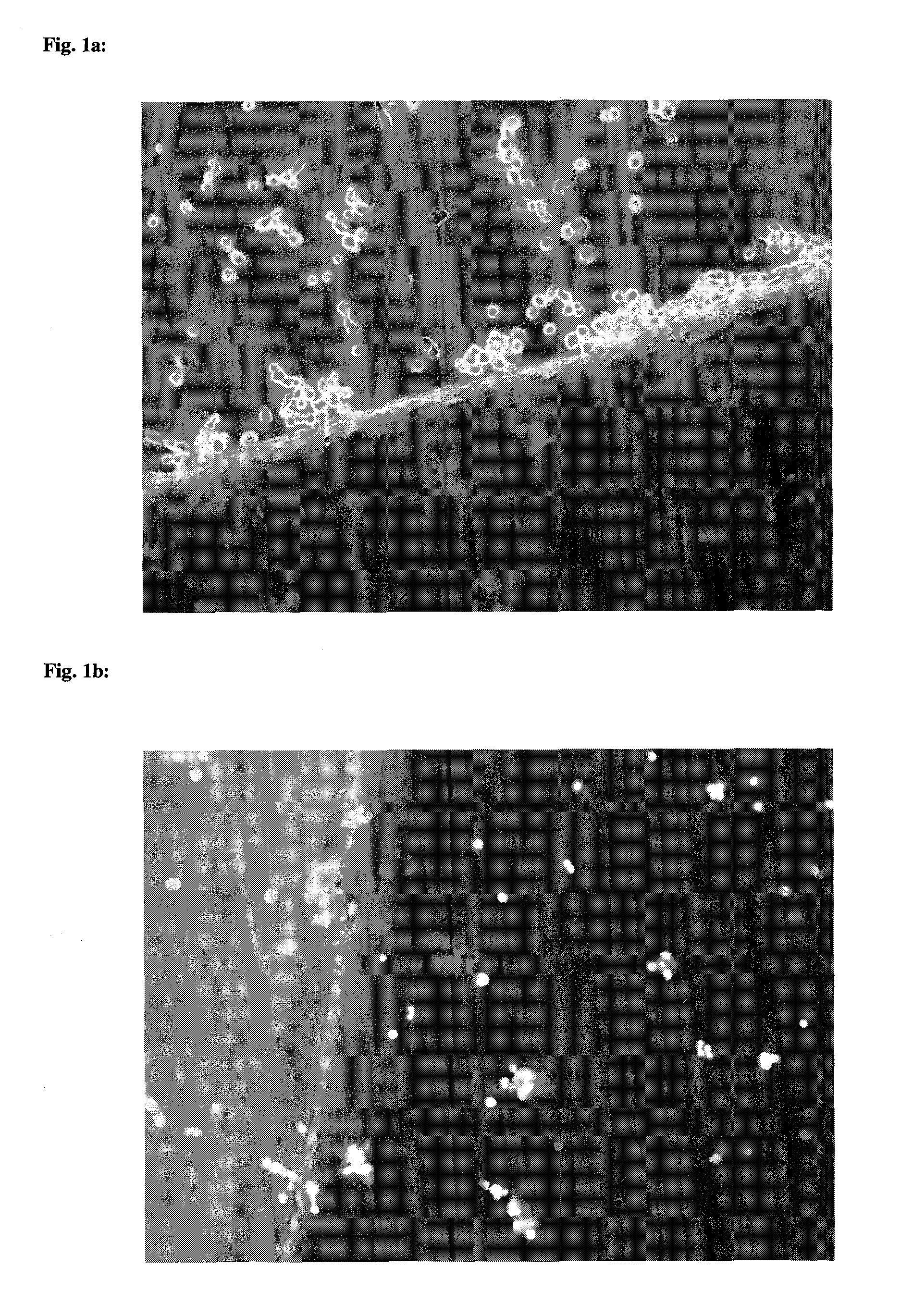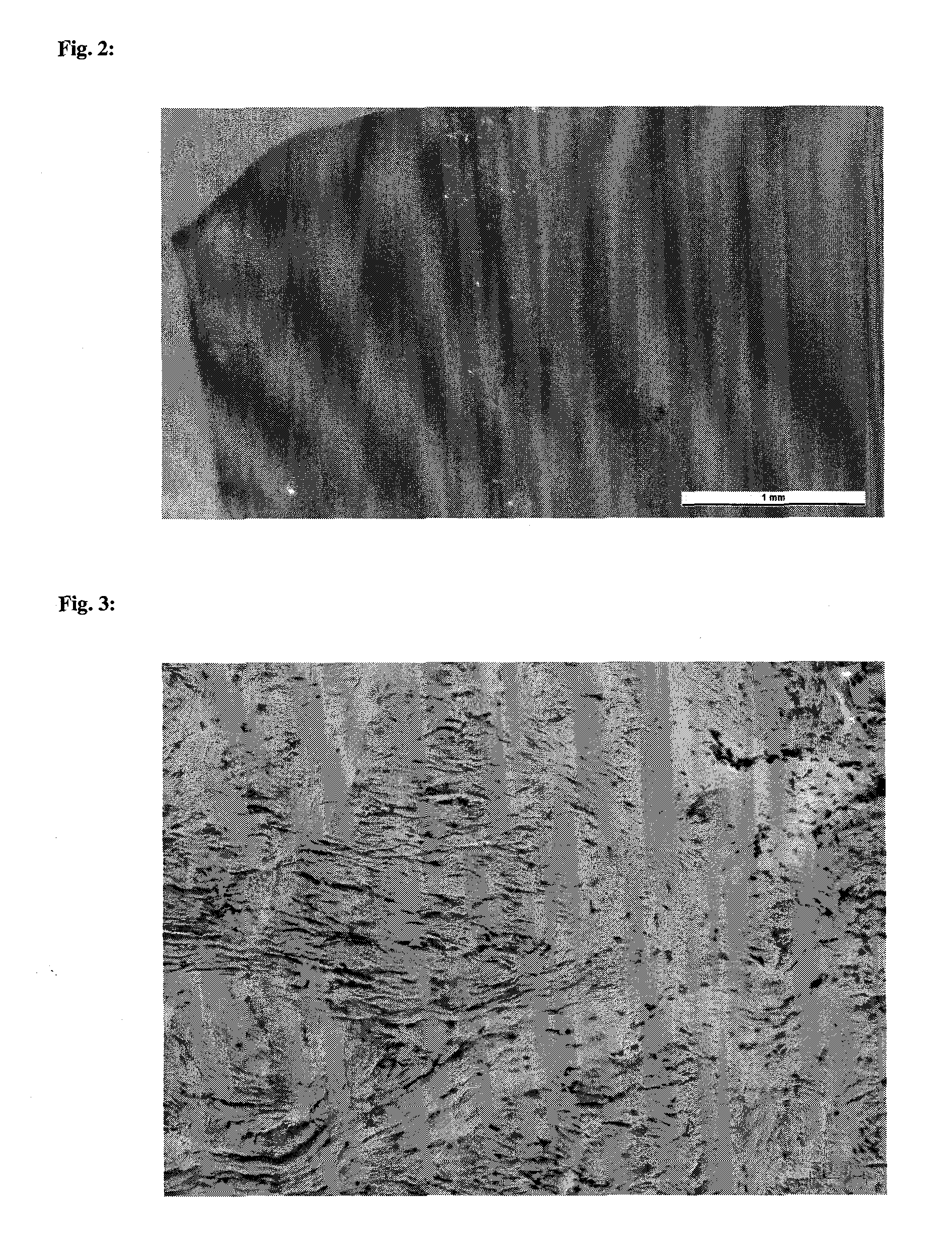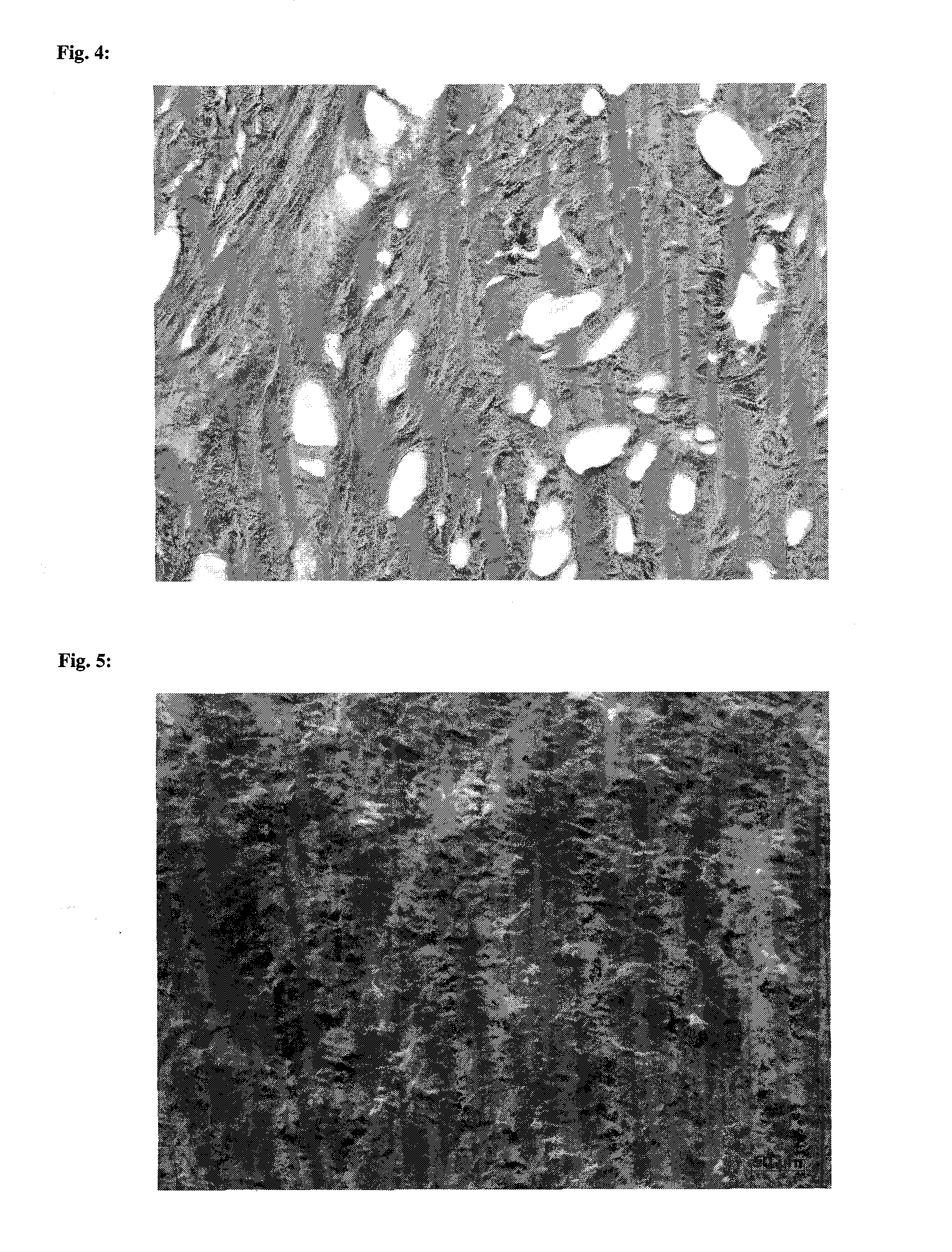Collagen implant
- Summary
- Abstract
- Description
- Claims
- Application Information
AI Technical Summary
Benefits of technology
Problems solved by technology
Method used
Image
Examples
example 1
Meniscus Tissue
1. Pretreatment—Washing
[0102]The tissues are processed in 0.8 L H2O(deion) for 24 h in a 1 L plastic bottle. During the first 10 h every 2 hours the tissue is treated 10 min in an ultrasonic bath. After every ultrasonics treatment the water is exchanged for fresh H2O(deion).
2. Alkaline Treatment for Cleaning and Inactivation
[0103]After 24 h, directly after the separation of the water the tissues are transferred into 0.5 L of 1 N NaOH solution and processed for 3 h. At the end follows 10 min of an ultrasonic application. The NaOH solution is separated.
3. Washing Step
[0104]The tissues are washed 24 h with 0.8 L H2O(deion) for the removal of NaOH solution and hydrolysis products. During the first 4 h every 30 min the water is changed. The pH value of the washing solution should be controlled. If necessary, washing must be continued.
4. Defatting Step
[0105]After separation of the washing solution the tissues are treated in 0.5 L of 70% ethanol for 3 h. At the end follow 10...
example 2
[0133]The process is described for human nasal cartilage. It can also be used for porcine and bovine cartilage.
1. Pretreatment—Washing
[0134]Human, uncrushed (and also crushed) nasal septum cartilage is processed in 0.8 L H2O(deion) for 24 h in a 1 L plastic bottle. During the first 10 h every 1-2 hours is treated 10 min in an ultrasonic bath. After every ultrasonic treatment the water is exchanged for fresh H2O(deion).
2. Alkaline Treatment
[0135]After 24 h, directly after the separation of the water the tissues are transferred into 150 mL of 1 N NaOH solution in a 0.5 L plastic bottle and processed for 3 h. After 1 h and after 2 h the tissue is treated 5 min in an ultrasonic bath. The NaOH solution is separated.
3. Washing Step
[0136]The tissue are washed 24 h in 400 mL H2O(deion) for the removal of NaOH solution and hydrolysis products. During the first 4 h every 30 min the water is changed. The pH value of the washing solution should be controlled. If necessary,...
PUM
| Property | Measurement | Unit |
|---|---|---|
| Fraction | aaaaa | aaaaa |
| Fraction | aaaaa | aaaaa |
| Weight | aaaaa | aaaaa |
Abstract
Description
Claims
Application Information
 Login to View More
Login to View More - R&D Engineer
- R&D Manager
- IP Professional
- Industry Leading Data Capabilities
- Powerful AI technology
- Patent DNA Extraction
Browse by: Latest US Patents, China's latest patents, Technical Efficacy Thesaurus, Application Domain, Technology Topic, Popular Technical Reports.
© 2024 PatSnap. All rights reserved.Legal|Privacy policy|Modern Slavery Act Transparency Statement|Sitemap|About US| Contact US: help@patsnap.com










